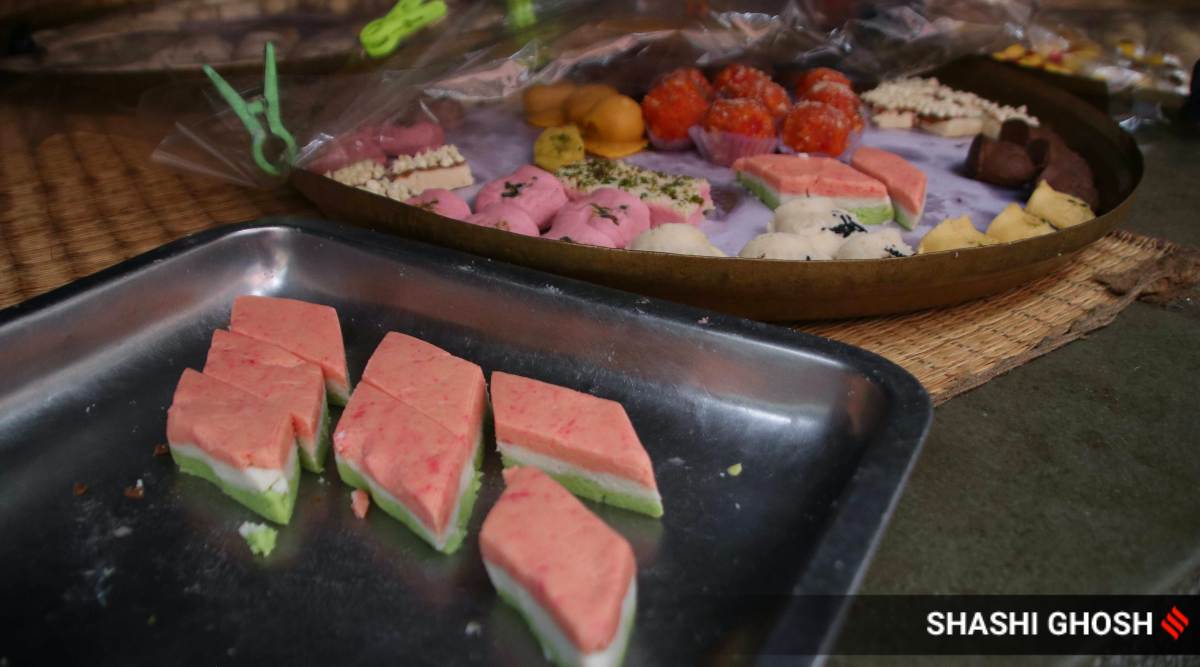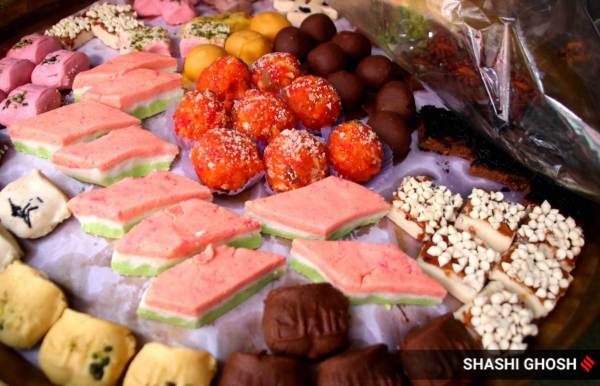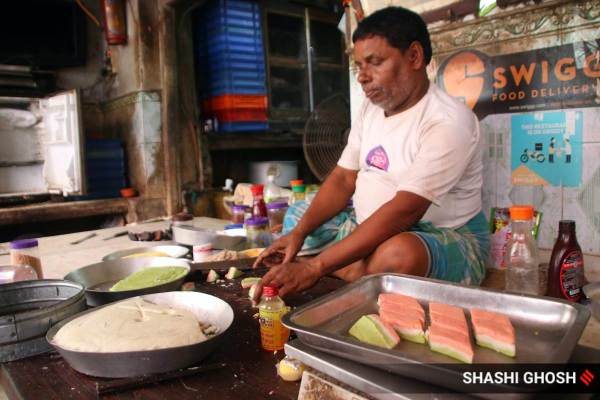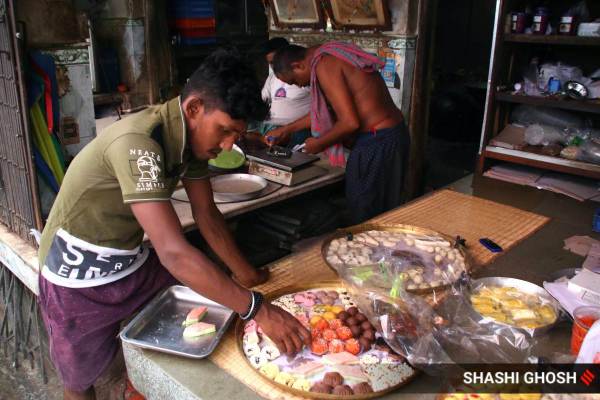 The idea of the Jai Hind sandesh was to encourage freedom fighters. Even taking the name of the Sandesh would fill their hearts with joy.
The idea of the Jai Hind sandesh was to encourage freedom fighters. Even taking the name of the Sandesh would fill their hearts with joy.For a sweetmeat that could land you in jail, Jai Hind Sandesh is fairly innocuous looking. It is a three-layered sandesh, orangish pink at the top, milky white in the middle and pistachio green at the bottom. A bite doesn’t spell danger either. It’s like any other flavoured sandesh in any half-decent Kolkata sweet shop. But Swapan Kumar Das, 6th generation owner of one of Kolkata’s oldest mishti shop or moyra dokaan (traditional sweetmeat artisans), insists that back in the 1940s, getting caught selling Jai Hind sandesh could have landed his predecessors in jail.
 Jai Hind sandesh is like any other flavoured sandesh in any half-decent Kolkata sweet shop.
Jai Hind sandesh is like any other flavoured sandesh in any half-decent Kolkata sweet shop. “My grandfather Manmatha Das first made the sandesh in 1941 or 1942. The freedom movement was at its peak at that time. The idea was to encourage freedom fighters. Even taking the name of the Sandesh would fill their hearts with joy,” says Swapan Kumar Das.
 The Jai Hind sandesh comes in colours of the tiranga.
The Jai Hind sandesh comes in colours of the tiranga. From the 1920s to 1940s, many Kolkata eateries supported freedom fighters by providing them rooms for secret meetings (like Paramount and Swadhin Bharat Hotel) or sheltering freedom fighters like Netaji Subhas Chandra Bose, Surya Sen, Rash Behari Bose. “My grandfather wanted the slogan to be on everyone’s lips. That was the idea behind making the Sandesh in colours of the tiranga. He would make this Sandesh at special occasions at the residence of zamindars. Freedom fighters would pass on secret messages in packets of these sandesh,” says Das.
Subscriber Only Stories
 Makhanlal Das & Sons sweetmeat shop’s premises is in almost Bollywood set-like state of decrepitude today.
Makhanlal Das & Sons sweetmeat shop’s premises is in almost Bollywood set-like state of decrepitude today. When the British government got to know about this, they banned buying and selling of this Sandesh sometime in the early 1940s.
“But that propelled the sale of these Sandesh even more. People would secretly buy and sell them. Freedom fighters like Badal Gupta, Surya Sen, Rash Behari Bose would personally use these sandesh to pass on secret messages,” says Das.
 When the British government got to know about this, they banned buying and selling of this Sandesh sometime in the early 1940s.
When the British government got to know about this, they banned buying and selling of this Sandesh sometime in the early 1940s. Today, the flagship store of the iconic sweet shop in Kolkata’s ironically named Natun (new) Bazar doesn’t attract a slew of youngsters. Its premises is in almost Bollywood set-like state of decrepitude, but the tricolour Sandesh finds the pride place in the giant bell metal plate that acts as the shop’s display table. “We will always be proud of our Jai Hind Sandesh,” says Das